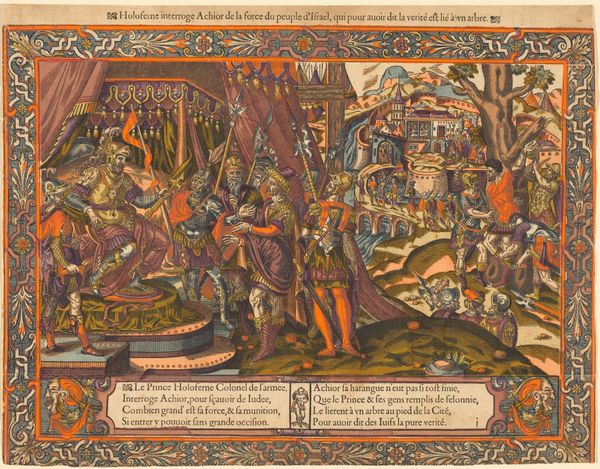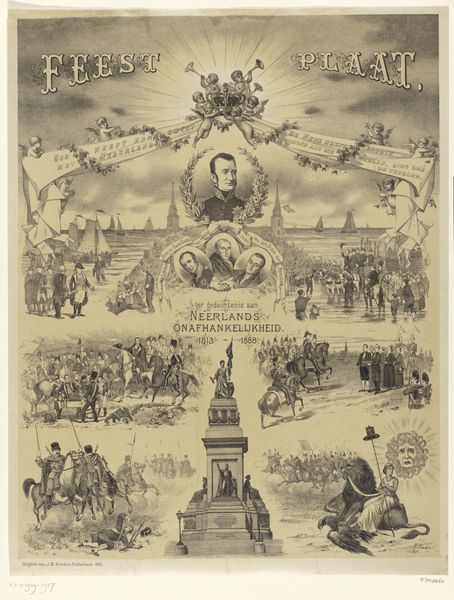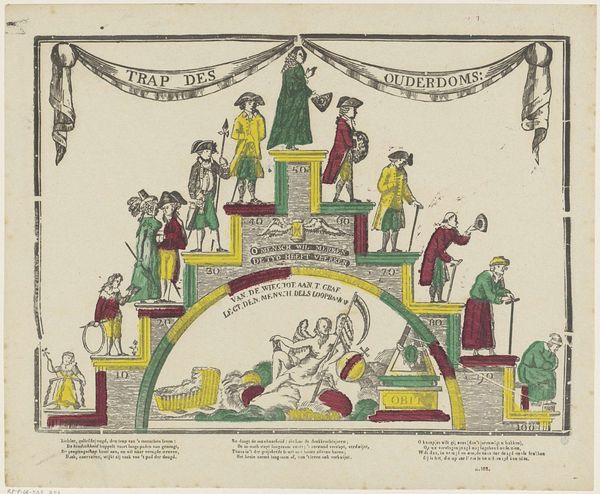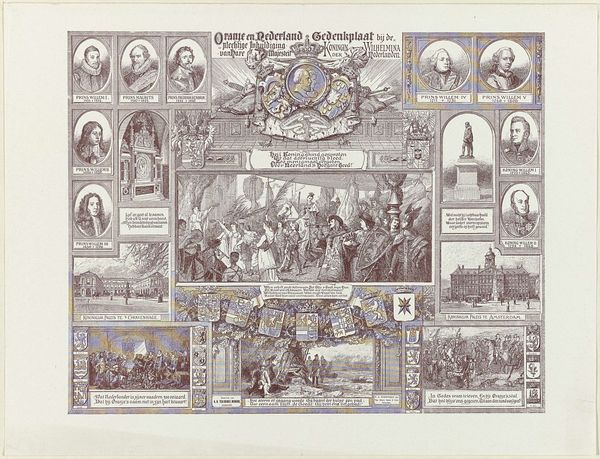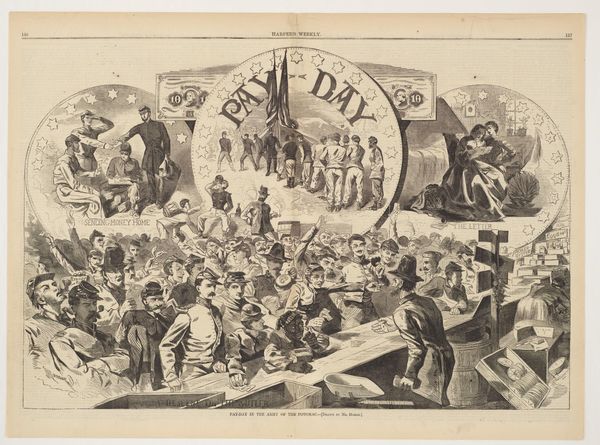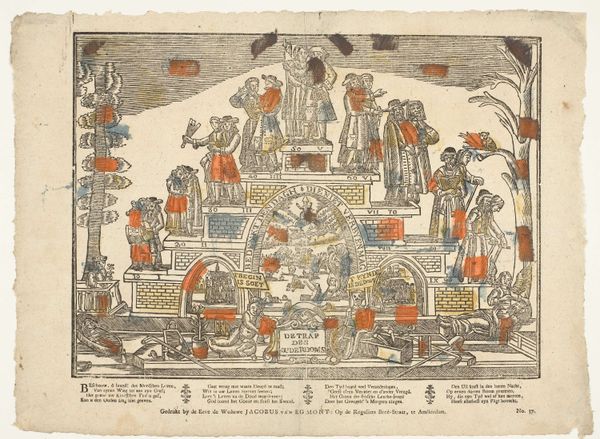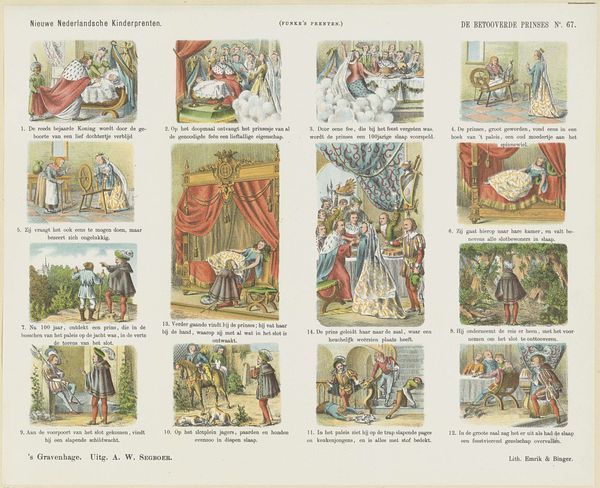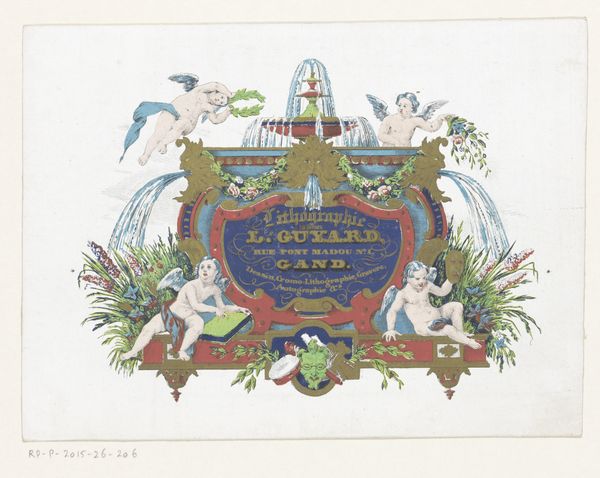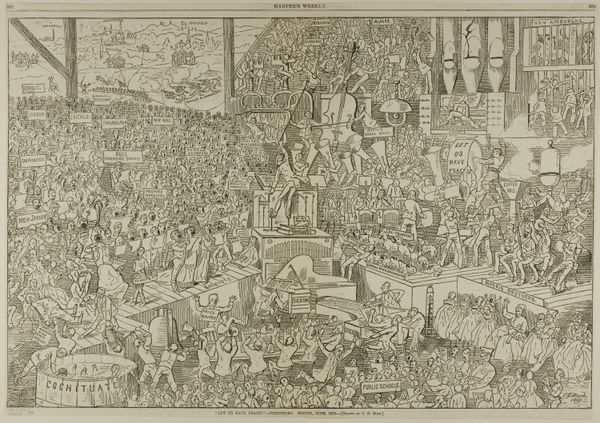
#
narrative-art
# print
#
traditional media
#
figuration
#
watercolour illustration
#
genre-painting
Dimensions: height 318 mm, width 476 mm
Copyright: Rijks Museum: Open Domain
Curator: "Het Nieuw Vermakelijk Mallemolenspel," or "The New Amusing Merry-go-round Game," created between 1887 and 1891 by S. Warendorf II, it seems to be a brightly colored print of a genre scene, perhaps used for advertising or as an elaborate game board. What are your initial impressions? Editor: What immediately strikes me is the chaotic energy – all these figures clamoring around a central structure. There's a delightful naivety to the rendering, and I detect a blend of eagerness and innocence conveyed by all the players! It has an almost fairytale quality, a bit bizarre even! Curator: I see your point about chaos. Given the period and the evolving commercial printing technology, this image served multiple roles. Firstly, it points to a rising culture of leisure. The merry-go-round itself would have represented modern amusement, a spectacle for the masses that shaped emerging modernities. Furthermore, notice the letter 'W' crowned above the structure – likely a mark referencing the printers Warendorf. Such pictorial language in itself suggests new approaches for companies branding. Editor: And how cunning to use imagery directly referencing luck! We’ve got prominent dice, figures are designated numbers. The repetition of animals like the lions suggest strength. What I believe to be horse figurines implies movement, which seems integral to a deeper meaning tied to ideas like competition and the desire for social advancement. I almost wonder if the Mallemolenspel wasn’t symbolic of societal striving. Curator: That's an insightful take, as the image reflects broader social tensions of the time: class aspiration, childhood leisure in urban environments, and rising market competition. Genre paintings such as this capture a fascination to organize the burgeoning masses of modern city dwellers. Furthermore, by arranging each little body into some number along a commercial game, perhaps he satirizes approaches to regiment urban bodies and spaces through policy making as well? Editor: Perhaps so! What fascinates me is the degree to which this piece, however simple on the surface, acts as a rich symbolic record of those emergent dynamics. It offers hints into what daily routines were for certain inhabitants within their locale, thus encapsulating popular desires! Curator: Exactly. What appears lighthearted reveals much regarding the social environment and shifting cultural codes inherent within late nineteenth-century commercialized entertainment!
Comments
No comments
Be the first to comment and join the conversation on the ultimate creative platform.
